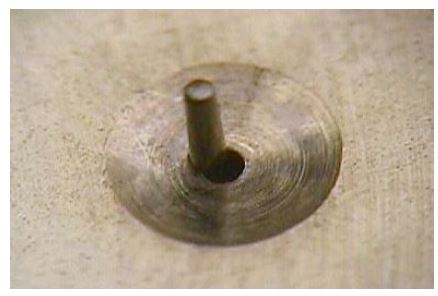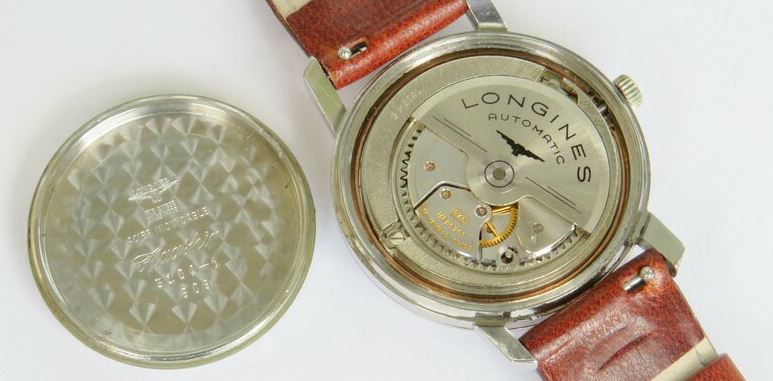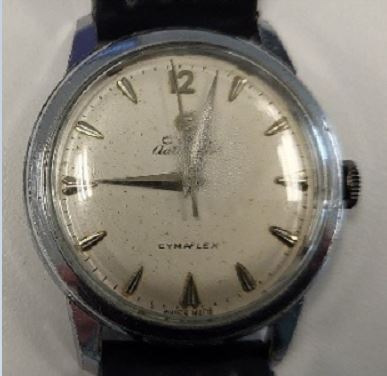If you notice your vintage watch losing time, you are not alone. Many factors can affect a watch’s accuracy over time. It is common for even the finest timepieces to lose a few seconds or even minutes over a day. In this post, we will explore several possible reasons for this issue and offer advice on how to address the problem.
The importance of regular servicing
A watch that loses time may simply be calling for a service. Over the years, dust and debris can settle within the delicate movement. Small particles may impede the natural flow of the gears and springs. As a result, the watch does not keep time as precisely as it once did. Regular servicing by a qualified watchmaker can restore your watch to its former precision. During a service, the professional cleans the movement, replaces worn parts, and lubricates components. This maintenance helps the watch to function smoothly and maintain its charm (Is vintage watch maintenance necessary? at Fratello).
Vintage watches have complex mechanisms that demand care. When you invest in such a piece, you invest in history. That history deserves attention and regular upkeep. Think of servicing as a rejuvenation process for your treasured item. If your watch seems to lose time consistently, a service might be the best solution. It is a practical step that can breathe new life into a cherished heirloom.
Impact and damage
Sometimes, a sudden change in timekeeping can indicate physical damage. If you have accidentally knocked your watch or exposed it to a jolt, the internal components might have suffered. Vintage watches contain small, delicate parts that can shift or break with an impact. Even a minor collision may disturb the intricate balance of the movement. If you suspect damage, it is wise to have the watch examined by a professional watchmaker. They will assess the extent of the damage and suggest the proper repairs (Shock protection at Watch Wiki).

A damaged watch can sometimes lose time because its components are not aligned as they should be. The delicate nature of these pieces means that even a small shock may alter their performance. A skilled technician can clean the movement, replace any parts that have been damaged, and carefully recalibrate the mechanism. This careful attention can help restore your watch’s reliability and charm.
The winding mechanism
Improper winding may also cause your vintage watch to lose time. Many modern wearers find it convenient to wind their watch while it is still on the wrist. However, doing so can lead to unintended consequences. Winding a watch in this manner may twist the winding stem at an awkward angle. Over time, this may damage the winding mechanism or the delicate movement components.
Taking your watch off your wrist before winding gives you better control over the process. It allows you to position the watch properly. With careful handling, you can ensure that you do not put extra stress on the movement. A gentle, deliberate winding helps preserve the integrity of the mechanism. By treating your watch with care, you extend its life and maintain its accuracy.
Magnetism
A surprising culprit behind timekeeping issues is magnetisation. In our modern world, we encounter magnets in many everyday devices such as smartphones, televisions, and even kitchen appliances. These magnets can affect a vintage watch if the timepiece comes close to them. Many components inside a watch, like the balance wheel and the hairspring, are made of metal. When exposed to a magnetic field, these parts may become magnetised (The impact of magnetism on watches at WaHaWatches).
Magnetised components can stick together or move slightly out of their proper positions. This shift disrupts the balance required for accurate timekeeping. If your watch loses time and you suspect magnetisation, a watchmaker can demagnetise it using specialised equipment. This process helps the movement return to its normal function. Maintaining a safe distance from strong magnets may also help prevent this issue in the future.
The impact of water and moisture
When a watch crystal becomes foggy or shows visible droplets of moisture, it suggests that water has penetrated the case. This can happen when there is a significant temperature difference between the inside and outside of the watch. Water and moisture pose a significant threat to vintage watches. These timepieces are built with precision, but water can seep into the mechanism. Even a small amount of moisture may damage sensitive parts like the balance wheel and the hairspring. Water exposure can lead to rust and corrosion, which further impairs the watch’s performance. Even if the watch states it is waterproof, as with any vintage watch, it should be kept away from water and moisture.
To dry out minor moisture, place your watch in a dry, controlled environment with low humidity. Surround it with moisture-absorbing desiccants, such as silica gel packets, and seal both the watch and desiccants in an airtight container to speed up the process. Leave it undisturbed for at least 24 hours to allow the silica gel to draw out any remaining moisture (How to get condensation out of a watch at Gnomon Watches).
If your watch has been exposed to water, it is important to have it checked promptly. A watchmaker can open the case, dry the movement, and inspect it for any signs of rust. Early intervention may prevent more extensive damage. Protecting your watch from moisture will help it maintain its accuracy. Always consider removing the watch in damp conditions and storing it in a dry place when not in use.
Extreme temperature changes and their effects
Temperature fluctuations can also affect your vintage watch. Extreme heat or cold may influence the performance of the movement. When a watch is exposed to drastic temperature changes, the components can expand or contract. This movement can disrupt the careful balance that ensures accurate timekeeping.
Heat, in particular, may dry out the lubricants within the watch. Dry lubricants create more friction among the moving parts. Increased friction can cause the gears to slow down or move erratically. It is important to keep your watch in a stable environment. Avoid exposing it to direct sunlight or placing it in very cold settings. By protecting your timepiece from harsh temperatures, you help maintain its precision and longevity (Temperature effect in watches at Vintage Watchstraps).
Ongoing care
Your handling of the watch also plays a crucial role. Always wind your watch in a safe and controlled manner. Avoid wearing the watch when performing tasks that might expose it to impact or moisture. Being mindful of your surroundings will help preserve the delicate internal mechanisms. A little extra caution goes a long way when you treasure a vintage piece (How to know if your watch needs a service at the Watch Collectors Club).
Professional help
There may come a time when you feel unsure about the cause of your watch’s inaccuracy. In such cases, seeking the help of a professional is the best option. An experienced watchmaker can diagnose the problem with precision. They have the expertise to handle vintage movements and know the best ways to restore your watch’s performance.
A professional service might include demagnetising the movement, replacing worn-out components, or cleaning the entire mechanism. It is an investment in the longevity of your watch. By addressing issues early, you can ensure that your vintage watch remains a reliable and cherished companion for years to come.
Conclusion
In summary, many factors may cause a vintage watch to lose time. Regular servicing, careful winding, protection from impacts, and safeguarding against magnetisation and moisture all play a role in maintaining accuracy. Extreme temperatures may also affect the watch’s performance. Caring for your vintage timepiece involves a combination of routine maintenance and mindful handling. By taking these steps, you preserve not only the function of your watch but also its historical and sentimental value.
If your watch starts losing time, do not worry. Take a moment to consider all these factors. A careful inspection by a professional can reveal the root cause of the issue. With proper care, your vintage watch can continue to tell time accurately for years to come.
Related content
British Horological Institute – Accredited Repairers for watch servicing.



Leave a Reply